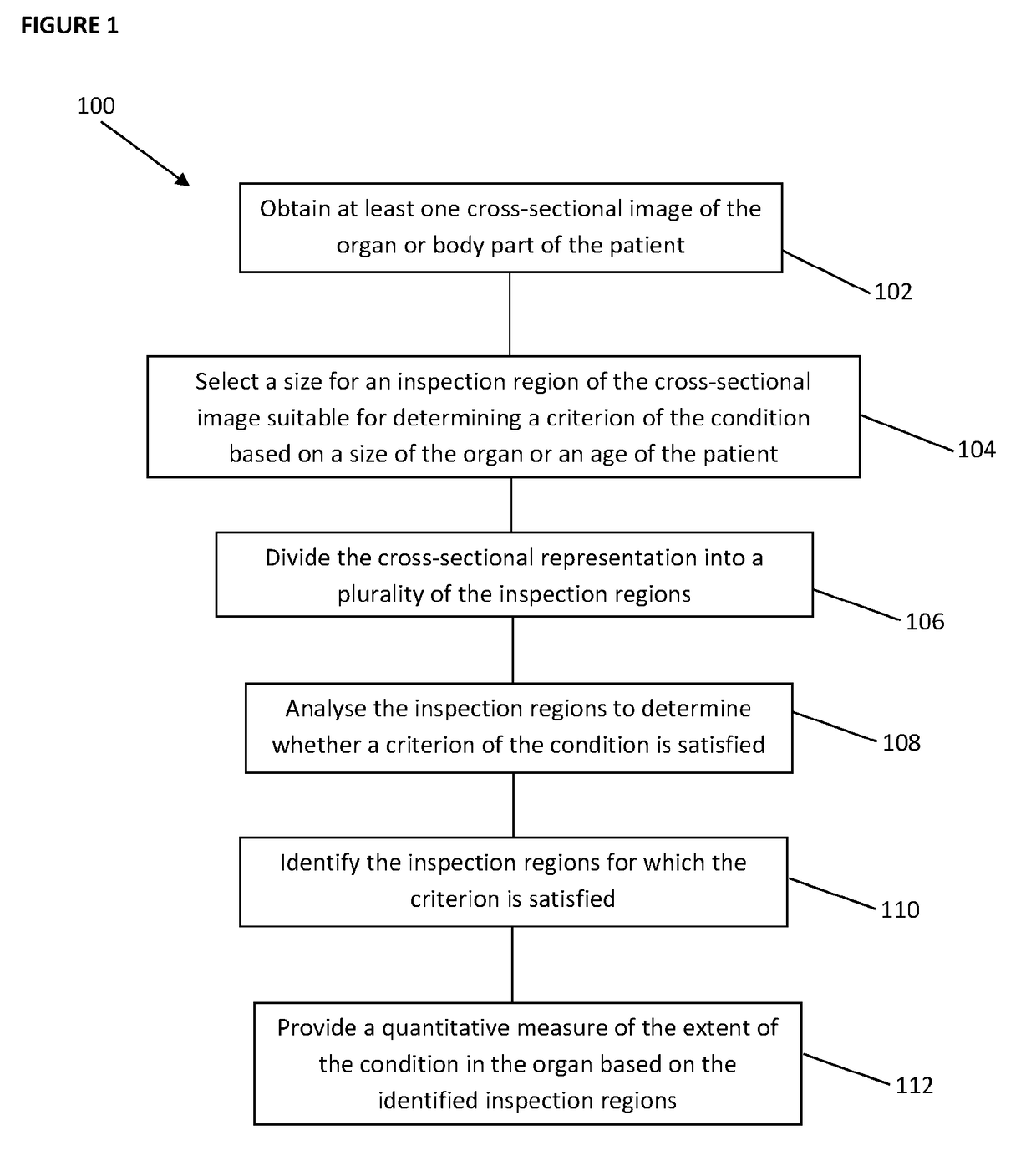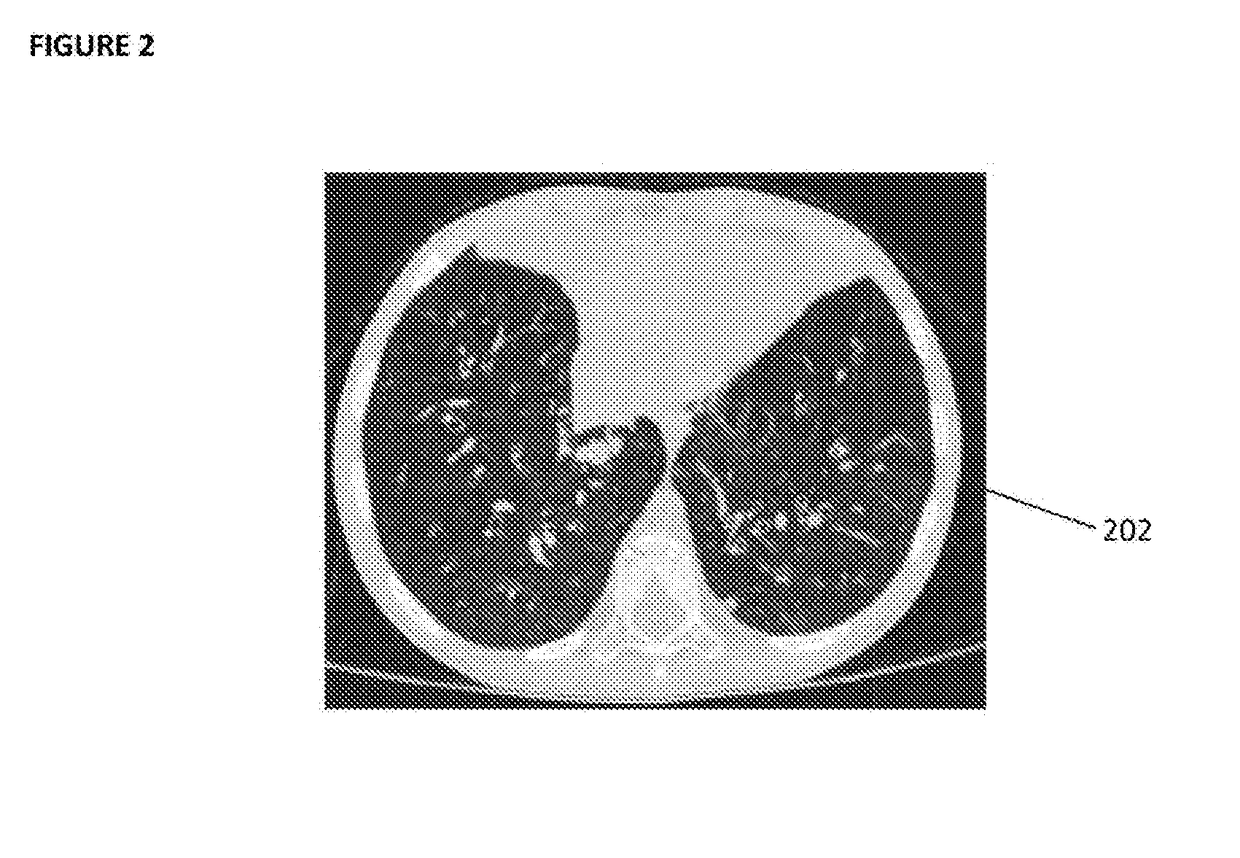A Method of Analysing an Image for Assessing a Condition of an Organ of a Patient
a technology an image, which is applied in the field of analysing an image for assessing the condition of an organ of a patient, can solve the problems of semi-quantitative methodologies, inadequacies, and inability to standardise the outcome measures for very young children with cystic fibrosis, and achieve accurate and sensitive assessment.
- Summary
- Abstract
- Description
- Claims
- Application Information
AI Technical Summary
Benefits of technology
Problems solved by technology
Method used
Image
Examples
Embodiment Construction
[0055]FIG. 1 illustrates a method 100 of assessing the extent of a condition in an organ or body part of a patient. In a specific embodiment, which will be described herein, the condition is cystic fibrosis and the organ is a lung. However, the method 100 is not limited to this embodiment, and may be used for assessing other conditions, such as disorders causing immune deficiency, primary ciliary dyskinesia, and non-cystic fibrosis bronchiectasis, or diseases in other organs and body parts.
[0056]The method 100 may be used as a measuring tool for assisting in the diagnosis, monitoring the progression of cystic fibrosis, or to evaluate the effectiveness of drugs in clinical trials. For example, the method may be repeated after a period of time and at discrete time intervals such that a progression or treatment of the disease can be monitored. Thus, the method may be used to identity or establish a marker or indicator associated with the condition to assist in determining whether or no...
PUM
 Login to View More
Login to View More Abstract
Description
Claims
Application Information
 Login to View More
Login to View More - R&D
- Intellectual Property
- Life Sciences
- Materials
- Tech Scout
- Unparalleled Data Quality
- Higher Quality Content
- 60% Fewer Hallucinations
Browse by: Latest US Patents, China's latest patents, Technical Efficacy Thesaurus, Application Domain, Technology Topic, Popular Technical Reports.
© 2025 PatSnap. All rights reserved.Legal|Privacy policy|Modern Slavery Act Transparency Statement|Sitemap|About US| Contact US: help@patsnap.com



